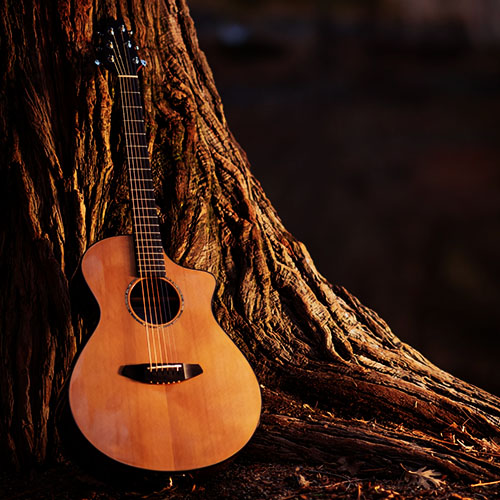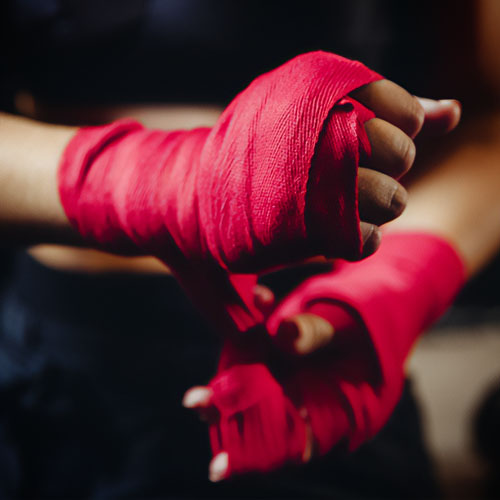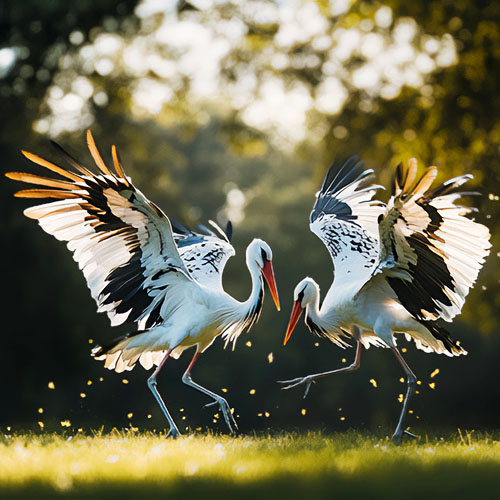The federal government has confiscated the land, but the frontier spirit lives on in a few cattlemen fighting to protect their way of life.
The Lost Frontier
I saw her around the corner, talking to someone who was still out of view. The Western fashions were what caught my eye: a raccoon fur coat cut and styled like classic sheepskin, except for those raccoon tails dangling in a macabre manner from the seam under each arm, like scalps from a belt. Cowboy boots of blond eel, with designs of peyote buttons and marijuana leaves stitched in. A lariat trailed off and down around the corner from her gloved hand, finally ending in a poodle. Was she headed for cutting and branding or for the manicurist’s?
Her partner wore an all-black leather sheriff’s-style outfit, with a black Stetson hat, a jeweled star pinned to his shirt, and silver collar tips. Silver toe caps were clipped on his ostrich skin boots, a map of Texas embroidered into them, with a small diamond marking San Antonio on the map.
I lost sight of them when I was compelled to turn by the rumbling wheels behind me. I was too stunned to move. Bearing down on me was another designer-label cowgirl, her Russian sable fur vest flapping in the breeze, leather gloves with long fringes whipping her thighs at each pump of her arms, her eyes to the ground; mine were, too, on her 16-inch-high hand-tooled boots with the wheels on the bottom — honest-to-goddamn cowboy roller skates that brought her gliding and rumbling straight at me, collision imminent, until I was on my back, looking up…
Whaamm! came the sound, rolling and reverberating as if I were inside a bell. “Time to get going!” the voice called. Peering through the scattering shreds of the dream, I placed myself: snug within my down sleeping bag, in the back of a Chevy van, parked on the Elton’s Cabin Bar Ranch. Consciousness returned: 4:00 A.M., time to get up and join the cattle drive, the autumn drive from the Sierra Mountain foothills out to the high desert.
This is a tale of the New West. In these times of internal combustion, a “cattle drive” usually means that you herd your cattle onto the back of a truck and drive them to their destination. A web of dirt roads crisscrosses the West. The range is diminished, fenced, streamlined, diversified from simple cattle ranching. Nobody actually mounts up and rides herds of cattle any great distance any more, certainly not the hundreds of miles that drives covered a century ago. Fifty years ago a drive that crossed a state line was so rare that when one happened in the 1920s, Hollywood producer Earl Hudson rushed a crew of actors, cameramen, and writers there to get in the act and make the film Sundown as the drive unfolded before them. My task was similar: to accompany Buck Elton, Sr., his son Buck Jr., and their wives and family on as authentic a cattle drive as is left in the West. We would push several hundred cattle 18 miles today, pen them up in a remote corral, and then go 16 miles the next day to a waterhole.
Buck Sr. invited me inside the ranch house — actually a large mobile home — for a quick bowl of cereal and a cup of coffee before we headed out. My interest perked; I am a caffeine fiend, and the original “cowboy coffee” recipe calls for boiling the mixture until a horseshoe will float on top. But this is the Mild West; the “coffee” was Sanka. My expectations — or illusions — were taking a beating.
Out at the corral my hosts were saddling up our mounts in the subfreezing predawn air. My horse was a nag named Wampum, and Wampum coughed every time she breathed and loudly farted every time she coughed. “She coughs from alfalfa dust,” Buck told me. Her wind was a mystery, perhaps just age. Wampum farted so continually that after two hours I had to dismount and tighten the cinch strap 16 inches so that my saddle wouldn’t end up underneath her. She shrank like a pricked balloon.
The blue gray tint of approaching dawn lit up the scene I’d come looking tor: eight riders trailing along behind the cattle, getting them moving toward the alkali flats of the dry Owens Lake. The old hands were whooping at the cattle to get them started, each with his own chant: for Lou it was “Hey, ooo, hup, hup, hup.” Buck Sr. spat out “Die die die da da da” from his teeth. The catlle were eager: they had been penned near the ranch for days and wanted to move somewhere.
The light revealed my companions. Instead of bandannas, Buck and several other hands wore ski masks to keep the cold and alkali dust off their faces. It seemed an odd innovation, useful but not quite in the Western tradition. Annie Weston, one of the Elton daughters, said that she had started wearing ski masks on drives. The men laughed at it at first (as men will do) and then adopted It themselves. I was struck by the fact that bandannas and ski masks are both associated with bandits, as disguises, and now ski masks are replacing bandannas on the range. Buck Sr. wore a red mask with blue eye and mouth holes that made him look like a squat, bowlegged Spiderman in the saddle.
The cattle moved well; they had no calves to slow them down or make them nervous by arousing their protective maternal instincts. The drive immediately acquired a rhythm that rarely varied tor two days: clopping horse hooves were the percussion, lowing cows the bass notes, jingling reins the vibes, hoots and howls from the cowboys and cowgirls the occasional vocal chorus. After the scene was set, there was little variation. Cowboying seemed to be a lot of solitude in fresh air, and I realized why stereotyped old cowboys were always so reticent, shy, and deliberate in their pronouncements: you get out of the habit of conversation after a while. But in the New West you’re not likely to be away from people very long; so this cowboy characteristic, like so many others, is fading.
The rising sun showed me two anachronisms: these quixotic cowboys, pursuing their livelihood in as old-fashioned a way as they could, upholding a life-style that was doomed decades ago but becomes more alluring and powerful as an image in exact proportion to its decline in reality. The Eltons could have trucked their cattle from the ranch to the waterhole by dirt roads, but they prefer the ritual of the cattle drive. Why raise cattle if you don’t try to keep the old ways, after all? The other sight that struck me as unusual was that of an extended family (including in-laws and friends) working together, their mutual fortunes dependent on each other. This bond of living and working with one’s relations has just about disappeared since the Industrial Revolution fragmented families for the sake of efficiency, but profits can be measured in ways other than in dollars. What is a strong, cohesive family worth on the open market these days?
I remembered my conversation with Dan Anderson, a young buckaroo with a growing family, son-in-law of Roy Hunter, the other rancher on this end of the valley. In between stringing barbed wire Dan and I mulled over the fact that the traditional ranches out here are family operations. Dan said, “You can do a lot better job if you’ve got an interest in it. A corporation will hire it done, and the people who are working don’t have an interest in what they are doing; so if a cow is sick, they won’t move it. They don’t really care; they’re taking orders from somebody else. But if that’s your cow and your living, you take care of it just the best way that you can.
“Just look at the whole United States, where the quality of our products has gone. That’ll tell you about the corporations and big business. They put it out cheaper, and they put it out in mass volume, but look what you’re getting.”
Another advantage of family ranching occurred to me. There are no wage requirements; in a bad year (the business is cyclical; there are always bad years) you don’t lose your ranch hands because you can’t pay them the minimum. This looked like an okay year for the Eltons; Buck Jr. thought they would break even and cover the losses of the last few years in the coming years.
I rode up to Buck Sr. and asked him how they do it, what a cow is worth. He quoted me a cents-per-pound price and then pointed out that his cattle are trained. His cattle, like Roy Hunter’s, know where the waterholes are and don’t often stray in other directions. This isn’t like the Texas longhorn roundups of a hundred years ago, when you had to push wild cattle every foot of the trip. These cattle just need to be pointed in the right direction and given a start, and they will go to the waterhole on their own. The cowboys just keep stragglers in line and watch for sick or pregnant cows. “So what’s a cow like that worth?” Buck asked me. “That’s the only way we can operate, with a trained herd.” It would take a crew three times the size of his family to push a wild herd along. I was struck by how willingly the cattle took to training, considering that the end result is the separation and slaughter of their calves. It seemed an odd reward tor their cooperation.
Other animals assist the cowboys; they have the hardest-working dogs I’ve ever seen. When a cow strayed, a whistle and a nod from one of the buckaroos sent his dog after the stray as if he were shot out of a gun. Barking and nipping at the cow’s heels, the dog turned it back to the herd. Usually this was enough. The dogs get an incredible kick out of pushing around animals ten times their size; they have to be restrained from spontaneously yapping and nipping cattle in the herd.
And the horses? “All the cowboys claim that horses are like women,” Roy Hunter had said. “You’re only entitled to just one good one, and that’s usually about the way it works out. Some horses are good travelers, but they won’t work cattle, and some are mean or gentle or hard to shoe. Every horse has got a bad habit, and it’s hard to find one that doesn’t have any bad habits.”
Roy used to capture wild horses for sale when he was younger. “I had one horse that I used for eight years, and I don’t think I’d be exaggerating if I said that horse earned me one hundred fifty thousand dollars. He’d always give me a throw; he would always give me at least one shot at the mustang.”
Buck Sr.’s horse on this drive is a beauty, bred from an Egyptian champion. The horse is slim-legged and smaller than most, though, and the previous owner couldn’t get anyone interested in paying him astronomical stud fees. When Buck heard the horse was for sale, “I couldn’t believe what I was seeing. The horse trader came out in me, and I said, ‘I’ll take it off your hands for four hundred dollars.’ He said make it five hundred dollars, and I couldn’t get him out of there quick enough.”
A price of $500 for a fine horse is unheard of. Horses are wanted on the French meat markets, Roy Hunter told me. The current rate is 44 cents per pound; so a broken-down 1,000-pound nag Is worth at least $440 to the French horse buyer. Naturally this has driven prices for good horses way up. Roy also adds, “When you’ve got a lot of people with more money than brains, they’ll pay five thousand to ten thousand dollars tor a good horse.”
The tact that one good horse is enough for a cowboy is another sign of changing times. In early cattle drives each man had a string of six horses that he rode all day and half the night tor five weeks to four months, and often all six horses were broken down and worked out at the end of the trail. Today a two-day cattle drive of more than 30 miles is an event.
It was at this point during the drive that Wampum decided to give me a lesson in Western fashion and its function. She had been dipping her head periodically to munch dried weed flowers along the trail; so when she lowered her head again, I didn’t take notice … until I was going down, too, Wampum rolling to her right. The nag wanted to roll in the dust, and it was too late to stop her.
Before a half-ton of horse flesh pinned my foot and rolled over my right leg, snapping it sideways at the knee, I flicked the high heel of my boot forward, pitching the stirrup to the ball of my foot. A short hop freed my right foot just before it went under her; my left foot was still hung up, but that side was safe. It was an instantaneous movement, seemingly instinctual, made possible by the design of my boot: high heel and bowed arch. So I wasn’t “bottomed out” in the stirrup.
The Eltons were astonished; they’d given me Wampum because “she never does that,” being the oldest and gentlest horse they have. But who knows what’s in a horse’s head? When I got her back up, she added injury to insult by stamping on my left foot with her left foreleg, dammit. “Boy, when they do that early on a cold mornin’, it feels like your toes are going to break right off,” Keith said.
The incident left me with ruffled feelings but reminded me that Western fashions evolved out of the problems that cowboys faced. Pointed toes on boots make it quicker and easier to get into the stirrup, especially on a spirited horse; bandannas are useful for providing warmth, for screening out dust, or for providing a strip of cloth in any emergency. Hat brims keep the sun off your face. Leather gloves prevent rope burns that would sideline a cowboy for two weeks while his hands healed; in the old days cattlemen would fire a cowboy who got injured through lack of proper equipment and clothing.
The Elton and Hunter drives occur in spring and autumn. The cattle spend the hot desert summer in the cool, grassy mountain meadows of the Sierras. In autumn the cowboys head up there and spend several weeks living in log cabins while they hunt the cows out of the ravines and thickets that they hide in. When the cattle are all accounted for, they are driven single file down a precipitous mountain trail to the ranch at the base of the Sierras. I joined the drive at this point, when they are driven to the high desert, where there are brush and waterholes but no snow-storms. In spring the process is reversed, with the additional work of separating out cattle to go to market and branding, castrating, and inoculating the new calves. This process has been repeated for generations here on the eastern slope of the Sierras; it is a cycle that some of these cowboys are born into.
“I started riding a horse even before I can remember,” Roy Hunter told me. “My dad would take me with him when I was three or four years old. My mother packed me into the mountains when I was three months old, from the town of Independence up to Little Whitney mountain.” It was the same for Roy’s son-in-law, Dan Anderson. “My dad felt that when you’re big enough, you’re old enough to do something. I started running the tractor when I was six years old. I was driving when I was in first grade or before that, really. I remember riding a dump rake when I was four or five years old. Well, I don’t think it hurts a guy any; in fact I think it does him good.” Dan and his wife, Leslie, have small children; I wonder if they will inherit this way of life. There are pressures, land grabs, encroachment; the Flatlanders are occupying the West.
Examples are found everywhere you look in Owens Valley, recounted by everyone you ask. Just look at Owens “Lake,” for instance. Once the largest lake in California, a haven for migrating birds and wildlife, Owens Lake is now a dry alkali flat. The wind off the flat blasts soda ash into our eyes and lungs as we push the cattle across the south end of the lake. Since the turn of the century Los Angeles citizens have drained Owens Lake dry, using it to hose leaves off their driveways and fill their swimming pools.
Across the valley in the distance is Hunter Mountain, explored by and named for Roy Hunter’s grandfather. On the other side of Hunter Mountain is Death Valley National Monument, which covets the water on the mountain. Roy had an eight-year legal battle with the Monument to keep his grazing and water rights; the Monument custodians wanted the water themselves. When the case ended up in circuit court, a Solomon-like compromise was handed down: Death Valley got the half of the mountain on their side of the range; Roy got water (but not grazing) rights on the , mountain. The problem is that Roy has no use for that water unless he can bring his cattle up there. Roy expects that in time the Monument will sue him again, charging that he isn’t using (read: “exploiting”) that water “productively,” and that he will lose all rights.
Buck Elton Sr. published a long letter in the local newspaper, criticizing a Sierra Club and Forest Service proposal to burn down the mountain cabins and close the Sierras to grazing, something about cattle destroying the land, crapping on the hiking trails, and the cabins being eyesores. Buck, Roy, and the other ranchers have more pressing chores than writing letters, attending hearings, and lobbying legislators. Their opponents have the time, money, and organization to keep the pressure up until their tract of land is “saved” for recreation, water rights, or weapons testing. Cattle don’t vote; people do, and the cowboy has always been a tiny minority in this state.
The desert is an unyielding environment; it used to keep the flatlanders out with its heat, dryness, wind, and dust. It seemed an unchangeable land, unaffected by seasons, weather, the life in it, the human visitors and residents. Today tire tracks crisscross the remote desert, tracks that will lie baked in the sun for years, even decades. Aluminum beer cans glint from every crevasse. Roads are cut into sheer mountainsides like Jack the Ripper slashes for no point other than to “create jobs” and provide effortless joyride vistas of the valley below, while spoiling the view of the mountain above.
“When I grew up, you didn’t have a truck; it was all pack mules and horseback,” Roy Hunter recalls. He’s only in his fifties now. “When we went somewhere, we saddled up the horses and packed a mule.”
But motors bring subtler changes, too, which Roy is aware of: “You know, everybody’s in a hurry now. Before, you took out a bunch of cattle, and if it took two days or four days, it didn’t make any difference. You didn’t have to be at a certain place at a certain time on any schedule.” Now that the government owns the range and the ranchers lease it, they’ve got to watch their paperwork, keep dates in mind, live by the calendar and the clock instead of according to the weather and the seasons.
In the end the land squeeze forces the cowpokes out of their trade. Every little town throughout the West has at least one old-timer who hangs out on his ranch or at the local bar or lunch counter. When you ask about cowboys in town, you inevitably get sent to this guy first; he’s a local institution. He’s easily recognized. After decades of desert life their faces come to resemble the land around them; their wrinkles match the canyons, arroyos, rills, plateaus, and dirt roads they’ve grown old with.
In Independence it was Old Grant — no first name needed or used. Grant is reputedly in his nineties, a veteran cowboy and prospector. Some illness has taken an eye; he sits all day now in the Pines Bar, sipping coffee and staring at the television with his one good eye. Any show will do, but Bonanza is his favorite.
Down in Tecopa there is an old motel where retired fellows have perpetual beer parties on their fixed incomes; a sign over the place reads “Tequila Flats.” Tecopa Tex sits at a table in the shade, tearing into Coors cans, lighting up cigarettes, and laying apocryphal Old West tales on me. (“That ratller caught that bullet going in right in the fork of his tongue. That was the last of him.”) Tecopa Tex cowboyed in Arizona until “the big companies bought up all the land, and there wasn’t enough work for a good man.” So Tex bought a couple of delivery trucks, started an ice cream franchise, and made enough in 12 years to retire for lite. Tecopa Tex, the Ice Cream Cowboy.
In Lone Pine retired cowpoke Pete Olivas sits in his yard on sunny days, contemplating his unmatched view of Mount Whitney. His younger brother, Henry, tells me about his experiences as a Hollywood wrangler over 30 years; the nearby Alabama Hills were commonly used for films. While he talked, Henry pounded the broken handle out of a hatchet head: “I’ve been out in Death Valley drivin’ the CLANK twenty-mule team. CLANK CLANK. The pay was around five dollars an hour back then in the fifties. CLANK! I’ve worked with as many as fifteen different picture companies a year CLANK. Criminy, I’ve worked with Hoot Gibson, Tom Mix, Gene CLANK Autry, Hopalong Cassidy, CLANK Roy Rogers, John Wayne, Gary Cooper. When Robert Mitchum started out, he could hardly ride a horse. But they pick it up quick. Hell, CLANK I spent about ten days teaching Edward G. Robinson to ride. CLANK FLOP THUD. There, that’s done. You know a new handle, just a handle for a hatchet, is twelve dollars at the hardware store?”
Clopping along with Buck Elton’s cattle gave me plenty of time to think about these cowboys and the diminishing West. The character of the cowboy was formed by the open range, by a land in which “there were more rivers and less water, more cows and less milk, and where you could look further and see less than anywhere else in America.” The work, the clothing, the old ways are still about the same, but without vast, open rangeland these traditions seem almost self-mocking. The cowboy is joining the Indian as a near ward of the government, practicing his life-style on government land, stretching it out as tar as he can before some more powerful, organized lobby yanks the range out from under him. In this sense the Indians have more control over their land and lives than the cowboy does; they have been given the land in perpetuity, while the ranchers must rent their grazing lands from the Bureau of Land Management and the U.S. Forest Service. And what the government gives it can take away, especially in these days when energy prices are rising taster than beet prices, and it is known that coal, uranium, and shale oil lie under the brittle surface of the mountains and deserts.
Riding up a long, wide canyon, Buck Jr. spots a stake pounded into a pile of stones; a mining claim. Inspection of it tails to reveal what it is tor: coal, uranium, what? But whatever it is, it’s right in this broad canyon that the cattle must pass on their way to the water hole. Someday the Eltons will have to deal with an active mine working the middle of this thoroughfare.
Buck Sr., takes me ahead of the herd on the last few miles of the drive; he hopes that we’ll spot some wild horses that live in the high desert near the spring. We don’t. What we do see, though, is even more remarkable in a very different way. Rounding a turn, we are suddenly confronted with a barbed wire fence, a bull-dozed mound of earth as a rudimentary barrier, and a huge sign: “U.S. NAVY BOMBING RANGE DO NOT ENTER.”
Keith Ludwick, one of the cowboys, says, “By the way, don’t touch any metal or shells you might find. When we find them, we mark them with a kerchief and tell the navy patrol so they can go get them. Sometimes they lose shells.” Great. Why don’t they practice on L.A. or Vegas and leave the desert alone?
We ride around the fence; it is only symbolic, running a few hundred feet to each side of the dirt road. Just past the bull-dozed hump is another sign, tor those who didn’t get the point: “LASER WEAPON TEST AREA HAZARDOUS TO EYES.”
I wonder how the cows’ eyes stand it as I pull my sunglasses out of my pocket. Buck tells me not to worry; he’s called ahead to get permission to enter the range. There will be no activity here, but this is one more reason why ranchers have to stick to their schedules. I think back on the “friendly tire” casualties my veteran friends have told me about and hope that Buck’s permission to use the range for one day got through the chain of command to the officer of the day.
On maps of the West there are areas — wilderness areas, with no roads marked — that simply say “hazardous.” This is one of them. Others are in Nevada, near sites like Frenchman’s Flat, which will remain radioactively hot tor hundreds of years. We seem to be going backward in time to the days when maps had blank areas with dragons drawn in them, where no man dared to go. “Here be Monsters.”
A mile later our work is done; cattle are ringed around the water trough, quenching a two-day thirst. We are looking forward to riding the last mile back to the horse trailer, parked on one of the ubiquitous dirt roads so that we can be driven back to the ranch. I hear the word dance going around; it seems that a live band is going to be making a rare appearance in Lone Pine tonight. Care to join in? Well, a dance after the roundup? Going to town on Saturday night with the cowboys? It seems a necessary tradition and a chance to shake some of the kinks out of my back and legs.
The bar is packed when we arrive that evening. Buck Jr., his wife, Chris, and Annie and Lou are the Cabin Bar Ranch crew that come along; most of the older and younger hands stay home or go elsewhere. As soon as we step in, it’s obvious that in this “cowboy bar” in ranch country cowboys are a distinct minority of the clientele. The Western appeal of the bar is built in: ranch brands circle the walls, including the Cabin Bar and Hunter brands. The band is Sandy and the High Country; the bar is named The Roundup.
But the crowd is about as nouveau as you find anywhere in California: smalltown dopers hanging limply in their chairs, nursing a beer halt the night, slipping out for a joint hourly; dolled-up middle-aged matrons out for a swinging night; brooding “intellectual” bar stool pigeons gazing wistfully at the women dancing, too cerebral to make a play for them; truck drivers (wearing cowboy hats!) with a woman on each arm, pouring pitchers down; aggies wearing their International Harvester baseball caps, mud and shit still caked on their boots; and the young women in fashions inspired either by Hee-Haw or American Bandstand, C&W, or disco Danskins.
The music matched the crowd. There were two revisionist cowboy songs all night, Willie Nelson and Waylon Jennings tunes; beer and exhaustion muddled my memory for titles, it was plain that cowboy complaints and joys were foreign to this crowd. Now truck-drivin’ tunes, they got some response. The dancing really began when the band cranked out competent covers of Linda Ronstadt, old Elvis and Chuck Berry tunes, and more rock. When the disco began, the bar crowd thinned out in a sudden rush to the dance floor, even the cowpokes… Suddenly the scene seemed to be one more metaphor for the decline and dilution of cowboyism.
I stepped out into the crisp night air to revive myself and gazed at the Sierras and the high desert. To the south was the Hunter Ranch, where the whole clan was probably bedded down in its oasis of light and warmth. To the north, in Independence, Old Grant was watching the end of “The Late Show,” sipping coffee, his one good eye locked in a staring match with the unblinking television eye. Tomorrow will bring more Bonanza reruns …
Should you wish more historical reflection upon the American Frontier, we can get all ivory tower on you. Should you wish to completely change your path in order that you might ruminate upon some decideldy non-bovine creatures, we can assist in this endeavor as well. Helpful is good.
























